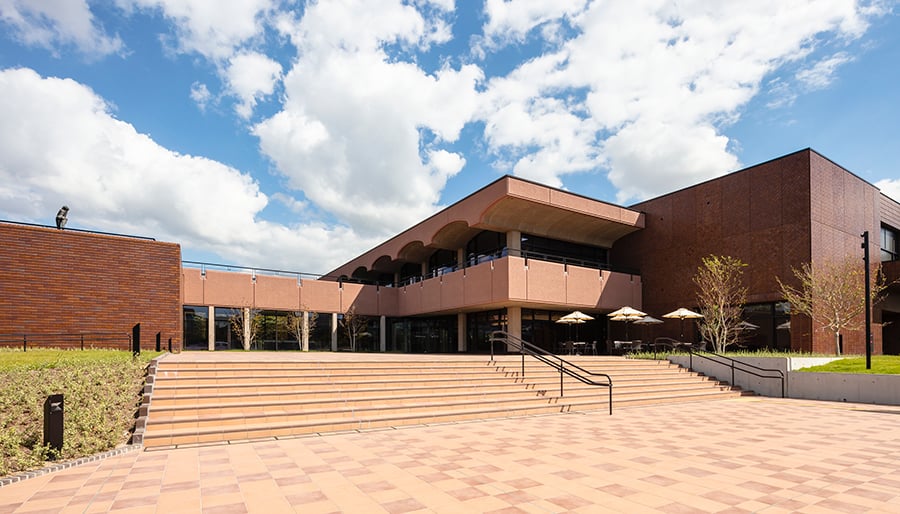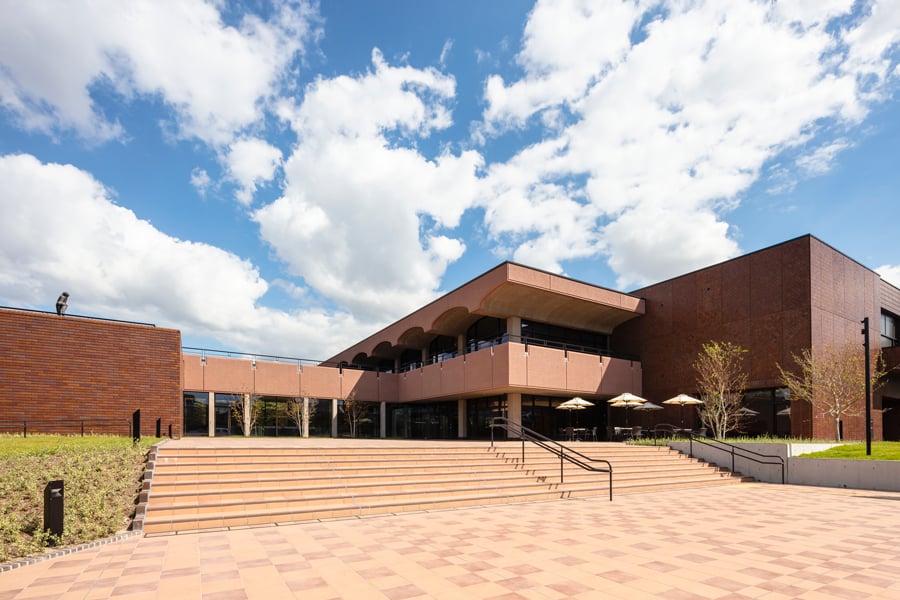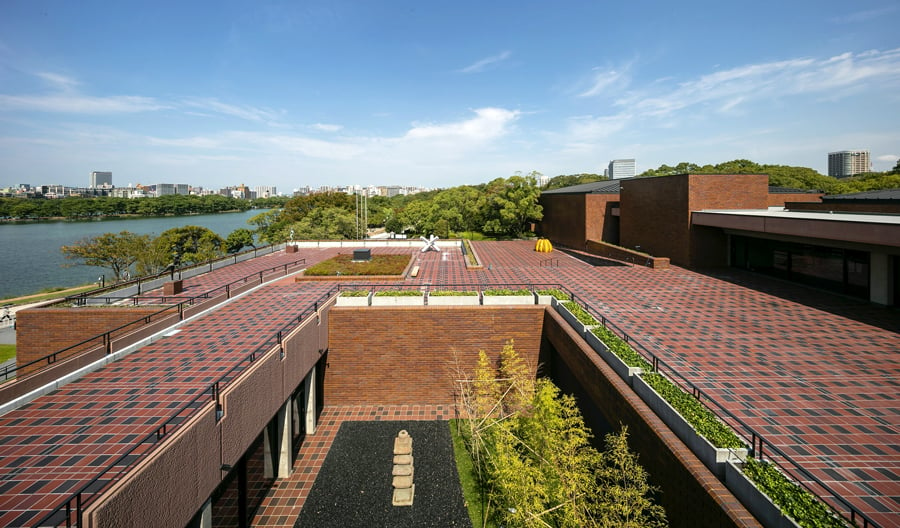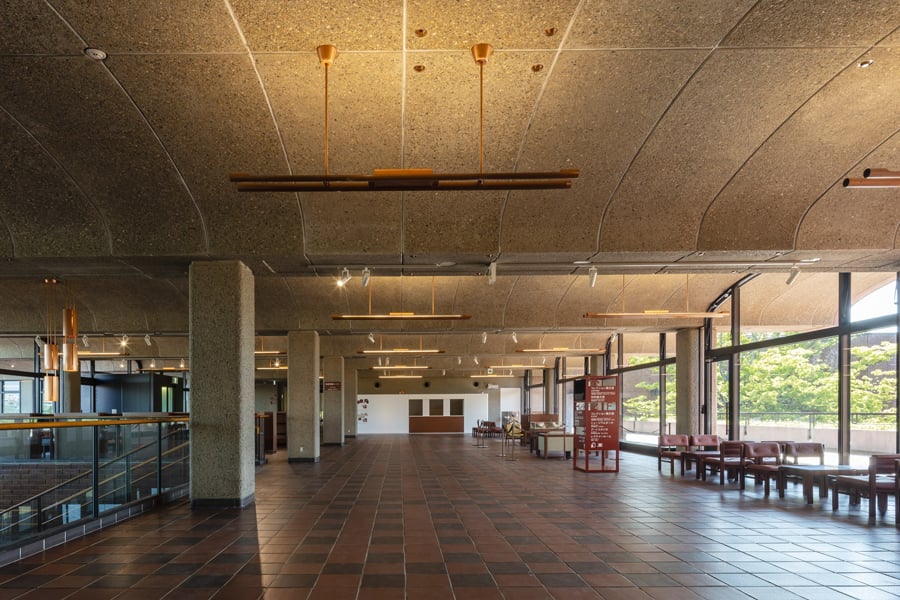
July 15, 2019
Design Cities 2019: Fukuoka, Japan
After a three-year renovation, the Fukuoka Art Museum reflects the coastal city’s international links, both past and present.

Kunio Maekawa didn’t import architectural Modernism into Japan, but he’s known in the country as one of its most enthusiastic defenders—“one of the leading warriors of the Modernist cause,” writes Jonathan M. Reynolds in Maekawa’s sole English-language monograph.
The architect’s command of overseas influences is on clear display at the Fukuoka Art Museum—which opened to the public in 1979 and again this spring after a three-year renovation—in the ancient city of over 1.5 million. Maekawa apprenticed with Le Corbusier and nurtured an international network of Modernists, and at the museum it shows: Barrel-vaulted ceilings, concrete pilotis, tiled terraces, and wraparound fenestration are so canonically Modernist, the building must have been considered passé during Postmodernism’s ascent.
Much of the recent renovation, completed by Tokyo firm Azusa Sekkei, seems to have been an effort to counter the impersonal effects of those features—a primary aim, says museum director Kiichiro Nakayama, was to “make it a more approachable facility.” To that end, the architects added a new café and shop and expanded the galleries to accommodate more contemporary works.
Nakayama adds that Fukuoka—roughly equidistant from Tokyo, Seoul, and Shanghai—functions as the “receiving tray” for Japan’s south of both cultural events and growing numbers of visitors, who are after the city’s laid-back beaches and renowned shopping scene. Hidden in plain view, Fukuoka is an unhurried respite from metropolitan Japan’s more frenzied tendencies—not unlike Maekawa’s architecture.
You may also enjoy “Design Cities 2019: Tulsa, Oklahoma.”
Would you like to comment on this article? Send your thoughts to: [email protected]
Recent Viewpoints
Viewpoints
Sustainability News Updates for Q2 2025













